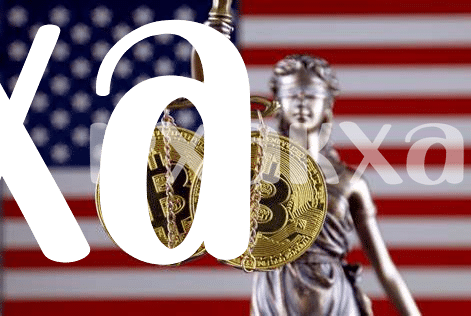Early Regulations 🕰️

In the early days of cryptocurrency, regulations were minimal and often unclear. This created a unique landscape where innovation thrived but also left room for potential risks and uncertainties. Governments around the world, including the United States, began to grapple with how to regulate this new form of digital currency. As a result, early regulations aimed to strike a balance between fostering innovation and safeguarding investors from potential risks associated with the nascent technology. This period laid the foundation for the evolving regulatory framework that continues to shape the cryptocurrency industry today.
Impact of Sec Guidance 📜
The SEC’s guidance on cryptocurrency has been a pivotal factor in shaping the regulatory landscape in the United States. Investors and businesses have closely monitored the SEC’s stance on initial coin offerings (ICOs) and digital assets, seeking clarity on how existing securities laws apply to these innovative technologies. The SEC’s enforcement actions against fraudulent ICOs have underscored the importance of compliance and transparency within the crypto space. Additionally, the SEC’s regulatory framework has influenced other agencies and policymakers, setting a precedent for how cryptocurrencies are viewed and regulated. While the SEC’s approach has provided some level of certainty, it has also sparked debates on the need for more tailored regulations that balance investor protection with fostering innovation in the rapidly evolving crypto market. As the SEC continues to refine its approach to digital assets, stakeholders are poised to adapt to the evolving regulatory landscape with caution and optimism.
State Vs. Federal Laws 🏛️

In the complex landscape of cryptocurrency regulation in the United States, a key point of contention lies in the interplay between state and federal laws. The decentralized nature of cryptocurrencies often poses challenges in determining which regulatory body holds jurisdiction over certain aspects of the industry. While federal agencies like the SEC provide overarching guidance on securities laws, individual states have also begun to craft their own regulations tailored to the unique needs of their local crypto ecosystems. This dichotomy between state and federal laws has led to a patchwork of rules that vary from one jurisdiction to another, creating a regulatory environment that is both dynamic and at times conflicting.
As the cryptocurrency market continues to evolve, the tension between state and federal laws is likely to persist, with potential conflicts arising as new technologies and business models emerge. Finding the right balance between federal oversight and state autonomy will be crucial in fostering innovation while ensuring consumer protection and market integrity. Despite the challenges posed by competing regulatory frameworks, the ongoing dialogue between state and federal authorities offers the opportunity to create a more cohesive and adaptive regulatory approach that can keep pace with the rapidly changing crypto landscape.
Emerging Trends in Policy 📈

Emerging trends in cryptocurrency policy are paving the way for a more dynamic regulatory landscape. As governments adapt to the expanding digital currency market, a shift towards clarity and oversight is evident. The emphasis on consumer protection and financial stability is driving policymakers to explore innovative approaches to supervise the industry.
The influence of global developments, such as the UAE government’s stance on Bitcoin, underscores the interconnected nature of cryptocurrency regulations. As countries navigate the evolving role of digital assets, collaborative efforts and knowledge-sharing are shaping the future of policy frameworks. This interconnectedness not only reflects the growing acceptance of cryptocurrencies but also highlights the need for coherent and adaptable regulatory structures. To delve deeper into the impact of government stances on cryptocurrencies, particularly in Togo, click here: government stance on the future of cryptocurrencies in togo.
Regulatory Challenges Ahead 🛣️
Navigating the landscape of cryptocurrency regulations in the United States presents a multitude of challenges. The evolving nature of digital assets poses a unique set of regulatory hurdles that authorities must address to ensure market integrity and investor protection. One major challenge lies in reconciling the differences between state and federal laws, creating a patchwork of regulations that can be complex to navigate. Additionally, the rapid pace of technological advancements in the crypto space often outpaces regulatory frameworks, leading to gaps in oversight and enforcement. As the industry continues to mature, regulators face the task of striking a balance between fostering innovation and managing risks associated with cryptocurrencies. Addressing issues such as consumer protection, anti-money laundering, and cybersecurity will be paramount in shaping the future regulatory landscape and maintaining the credibility of digital assets in the mainstream financial ecosystem. Tackling these regulatory challenges ahead will require a coordinated effort between policymakers, industry stakeholders, and regulatory bodies to ensure a robust and sustainable framework for the cryptocurrency market.
Future Outlook and Predictions 🚀

In the ever-evolving landscape of cryptocurrency policies, the future outlook and predictions are filled with both anticipation and uncertainty. As technology advances and the use of digital currencies becomes more widespread, regulatory bodies around the world are faced with the challenge of adapting and keeping pace with these changes. The United States, known for its complex and varied regulatory framework, is expected to continue refining its approach to cryptocurrencies in the coming years. With a push for innovation alongside the need for consumer protection, policymakers are likely to seek a delicate balance that fosters growth while mitigating risks. As trends shift and new challenges emerge, the future of cryptocurrency regulations in the U.S. will undoubtedly be influenced by a combination of market dynamics, technological developments, and evolving global standards.
For more insights on how governments are approaching the future of cryptocurrencies, it is essential to examine the official stance in different regions. To understand the varying approaches towards digital assets, one can explore the government stance on the future of cryptocurrencies in the United Arab Emirates and compare it with the perspectives shaping the regulatory landscape in other jurisdictions. By staying informed about these diverse approaches, stakeholders can gain a broader understanding of the potential trajectories that cryptocurrency policies may take in the future.
